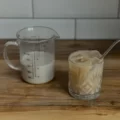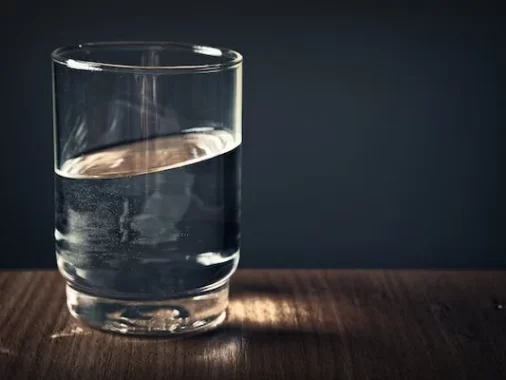In the world of culinary precision, understanding and converting between various units of measurement is essential. One such conversion, 35 mL to ounces (oz), can make a significant difference when it comes to crafting the perfect recipe. In this article, we explore the conversion factor between milliliters and ounces, which is 1 mL = 0.033814 oz. We’ll delve into the practical applications of this knowledge in the kitchen, ensuring that your dishes are perfectly seasoned and balanced. But the significance of this conversion extends far beyond the culinary world, finding relevance in fields like pharmacy, chemistry, and healthcare, where precise measurements are critical. Join us as we empower you with the ability to confidently convert 35 mL to oz or calculate how many ounces is 35 ml, enhancing both your culinary creations and your professional endeavors with a dash of accuracy and flavor.
35 mL is approximately equal to 1.18 ounces.
In the diverse world of cooking, precision matters. A splash too much or too little of an ingredient can dramatically alter the taste and texture of a dish. Often, recipes provide measurements in milliliters (mL), a metric unit universally used in the culinary world. However, for those more familiar with ounces (oz), understanding these milliliter measurements can be a bit tricky. Let’s delve into one specific conversion: 35 mL to oz.
Understanding the Conversion Factor: 1 mL = 0.033814 Oz
Firstly, to convert milliliters to ounces, you need to know the conversion factor. In this case, 1 milliliter is approximately equal to 0.033814 ounces. Armed with this knowledge, understanding that 35 mL is roughly equivalent to 1.18 oz becomes intuitive.
Practical Application in the Kitchen
Imagine you’re preparing a delightful salad dressing for a family dinner. The recipe calls for 35 mL of olive oil or how many oz is 35 ml olive oil. For those more comfortable with imperial units, this might seem perplexing. But armed with the conversion factor, you know you need just over 1.18 oz of olive oil, allowing you to confidently and accurately measure the ingredient, ensuring your dressing isn’t too oily or too bland.
The Importance of Accurate Measurements
In culinary arts, precision is akin to an artist’s brushstroke – it defines the masterpiece. Precise measurements guarantee a well-balanced flavor profile, a perfectly risen cake, or a refreshing cocktail. Whether you’re baking, sautéing, or mixing, understanding milliliters to ounces conversions ensures that your culinary creations consistently hit the mark.
Beyond the Kitchen: Practical Implications
Understanding these conversions isn’t just valuable in the kitchen; it has practical implications in various fields. Pharmacists, chemists, and even healthcare professionals dealing with medications often work with milliliter measurements. Knowing how to convert these measurements ensures accurate dosages, vital in healthcare scenarios where precision can be a matter of life and death.
Conclusion: Empowering Precision in Every Recipe
In the realm of culinary arts and beyond, the ability to convert 35 mL to oz empowers individuals to explore a broader range of recipes and professions. It’s a skill that not only enhances the flavor of our dishes but also ensures the accuracy of critical medications and scientific experiments. So, the next time you encounter milliliter measurements, remember this simple conversion. It’s not just about numbers; it’s about guaranteeing perfection in every drop, making your culinary and professional endeavors all the more flavorful and precise.
FAQs
Is 5 oz 100 ml?
No, 5 fluid ounces (oz) is not equivalent to 100 milliliters (ml). To convert fluid ounces to milliliters, you can use the conversion factor: 1 fluid ounce (oz) is approximately equal to 29.5735 milliliters (ml).
5oz×29.5735ml/oz=147.868
Therefore, 5 fluid ounces is approximately equal to 147.87 milliliters, not 100 ml.
35 mL to Oz?
conversion factor: 1 mL = 0.033814 ounces.
35mL×0.033814oz/mL=1.1846
So, 35 mL is approximately equal to 1.18 ounces.
What is the full form of Oz?
“Oz” stands for “ounces,” a unit of measurement used for both weight and volume in systems like the imperial and US customary systems. It quantifies mass and liquid quantity.
Is 1 cup 30ml?
No, 1 cup is not equal to 30 milliliters (ml). In the metric system, 1 cup is approximately equal to 250 milliliters. Different countries might have slight variations in cup sizes, but as a general rule of thumb, 1 cup is considered to be 250 ml
what is 55 ML to OZ ?
55 milliliters is approximately equal to 1.85 ounces.
How many ounces is 35 ml or or how many ounces is 35 ml?
35 milliliters is approximately equal to 1.18 fluid ounces.
How many oz is 35 ml?
35 milliliters is approximately equal to 1.18 fluid ounces or oz.





